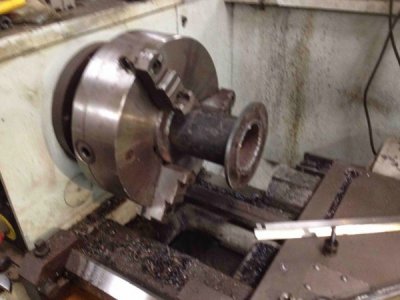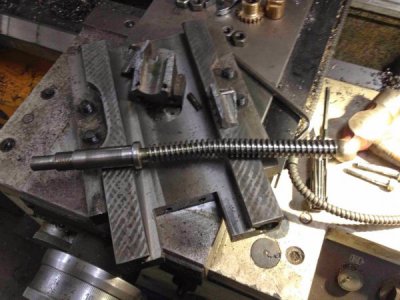- Joined
- May 4, 2019
- Messages
- 817
You don't have much grip on the pipe so you are going to have to take a lot of shallow facing cuts.
Run your tail stock up and extend the quill inside the pipe so if it does come out of the jaws it can’t get loose and create chaos.
The pipe is 5" long. Is that really too long to be unsupported? What's the rule of thumb for this type of thing?
I thought I might get the pipe running true (no wobble) then use a cut-off tool to trim off a ring from the end. I'll take light cuts.
I've got the back gear engaged so the cutting speed is nice and slow.


1. First part - yes, but you can make it work with light cuts
2. Second part - don't even think of using a cut off tool. The cutting force is way too high for that much unsupported work. The pipe will climb up onto the tool and break it or spring out of the chuck.
3. Shallow facing cuts from outside in, using the same type of tool you would use for turning down the diameter. You only need to make sure that the tool is angled so that there's enough side clearance. Or you could use a LH tool (for cutting left to right) mounted in line with the pipe/ bed. Doesn't matter.
4. Shallow cuts, get rid of the uneven bit, then face the pipe. It's pretty simple, no need to reinvent the wheel.
Another thought, although it might get some grit on your lathe you could use an abrasive cut-off in an angle grinder.
